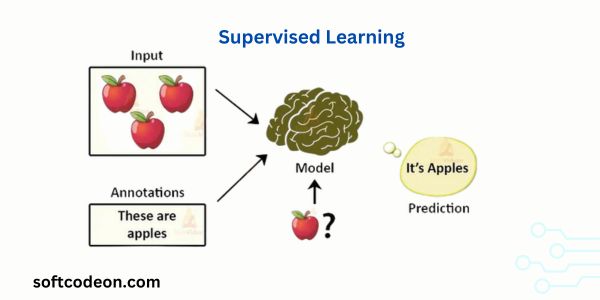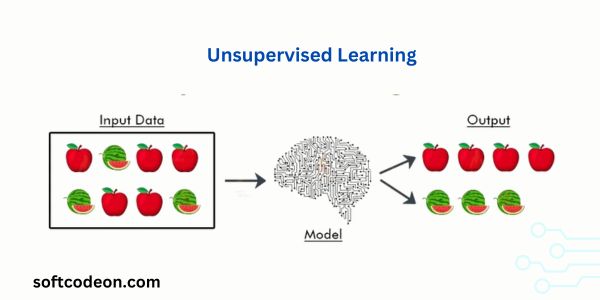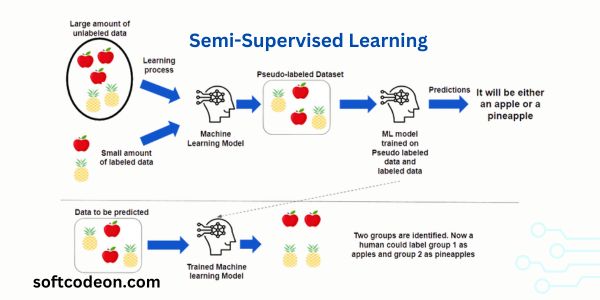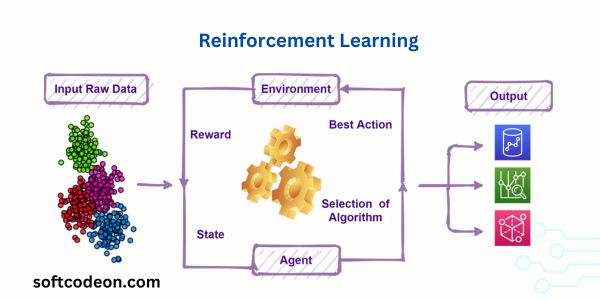Physical Address
304 North Cardinal St.
Dorchester Center, MA 02124
Physical Address
304 North Cardinal St.
Dorchester Center, MA 02124
What is ML? Machine learning is a rapidly advancing field of study and application within the broader domain of artificial intelligence (AI). It involves the development of algorithms and models that enable computer systems to learn from data and make accurate predictions or decisions without being explicitly programmed for each task. In essence, machine learning allows computers to learn and improve from experience, similar to how humans learn from their past interactions and observations.
Machine learning is a subset of AI that focuses on developing algorithms and techniques to enable computers to learn from data and improve their performance over time. By leveraging statistical methods, mathematical models, and computational power, machine learning algorithms can uncover patterns, insights, and relationships in large datasets that are often difficult or impossible for humans to identify manually.
Machine learning algorithms learn from data through a process called training. During training, the algorithm analyzes a labeled dataset, where the inputs (features) and desired outputs (labels) are provided. By identifying patterns and correlations in the data, the algorithm builds a model that can predict the correct output for new, unseen inputs.
Once the model is trained, it can be deployed to make predictions or decisions on new, unseen data. The performance of the model is evaluated based on its accuracy and generalizability to new data. If the model performs well, it can be used in various applications to automate tasks, make predictions, or assist in decision-making processes.

Supervised learning is a popular approach in machine learning where the algorithm learns from labeled data. The training dataset consists of input features and corresponding output labels. The goal is to learn a mapping function that can accurately predict the output for new, unseen inputs. Examples of supervised learning algorithms include linear regression, decision trees, and support vector machines.

Unsupervised learning involves learning from unlabeled data, where the algorithm discovers patterns, structures, or relationships in the data without any predefined labels. Clustering and dimensionality reduction are common techniques used in unsupervised learning. This type of learning is particularly useful in cases where the desired output is unknown or difficult to obtain.

Semi-supervised learning combines elements of both supervised and unsupervised learning. It leverages a small amount of labeled data along with a larger amount of unlabeled data to build models. This approach is useful when obtaining labeled data is expensive or time-consuming.

Reinforcement learning involves an agent learning to interact with an environment to maximize a reward signal. The agent learns through a trial-and-error process, receiving feedback in the form of rewards or penalties based on its actions. Reinforcement learning has been successfully applied to game-playing, robotics, and autonomous systems.
Deep learning is a subfield of machine learning that focuses on training deep neural networks. These networks, inspired by the structure of the human brain, consist of multiple layers of interconnected nodes (neurons). Deep learning has achieved remarkable success in various domains, including computer vision, natural language processing, and speech recognition.
Machine learning involves several key components that work together to enable effective learning and prediction:
High-quality data is crucial for machine learning. The data used for training should be representative, diverse, and properly labeled (if applicable). Data preprocessing and cleaning techniques are often applied to handle missing values, outliers, and other data issues.
Machine learning algorithms form the core of the learning process. There are numerous algorithms available, each suitable for different types of problems. Examples include linear regression, k-nearest neighbors, random forests, and convolutional neural networks.
Evaluating the performance of a machine learning model is essential to ensure its effectiveness and generalizability. Common evaluation metrics include accuracy, precision, recall, and F1 score. Cross-validation and holdout validation are techniques used to estimate the model’s performance on unseen data.
After a machine learning model has been trained and evaluated, it can be deployed for practical use. This may involve integrating the model into existing systems, creating APIs for accessing its predictions or building user-friendly interfaces for end-users.
Machine learning has found applications in a wide range of domains and industries:
The future of machine learning is promising, with ongoing advancements and new possibilities emerging. Some key areas of focus for future development include:
Explainable AI: Researchers are working on developing techniques that provide more interpretability and transparency in machine learning models, ensuring that decisions made by AI systems can be explained and understood by humans.
Edge Computing: With the rise of Internet of Things (IoT) devices, there is an increasing need for machine learning models to be deployed on edge devices, enabling real-time inference and decision-making without relying on cloud connectivity.
Responsible AI: Efforts are being made to address the ethical and social implications of AI and machine learning. This includes ensuring fairness, accountability, and transparency in algorithmic decision-making and mitigating biases and discrimination.
Machine learning is revolutionizing numerous industries and driving advancements in artificial intelligence. Its ability to learn from data and make accurate predictions opens up a world of possibilities. However, it also poses challenges that need to be addressed, such as data quality, ethical considerations, and model interpretability. As the field continues to evolve, machine learning will play an increasingly important role in shaping our future.